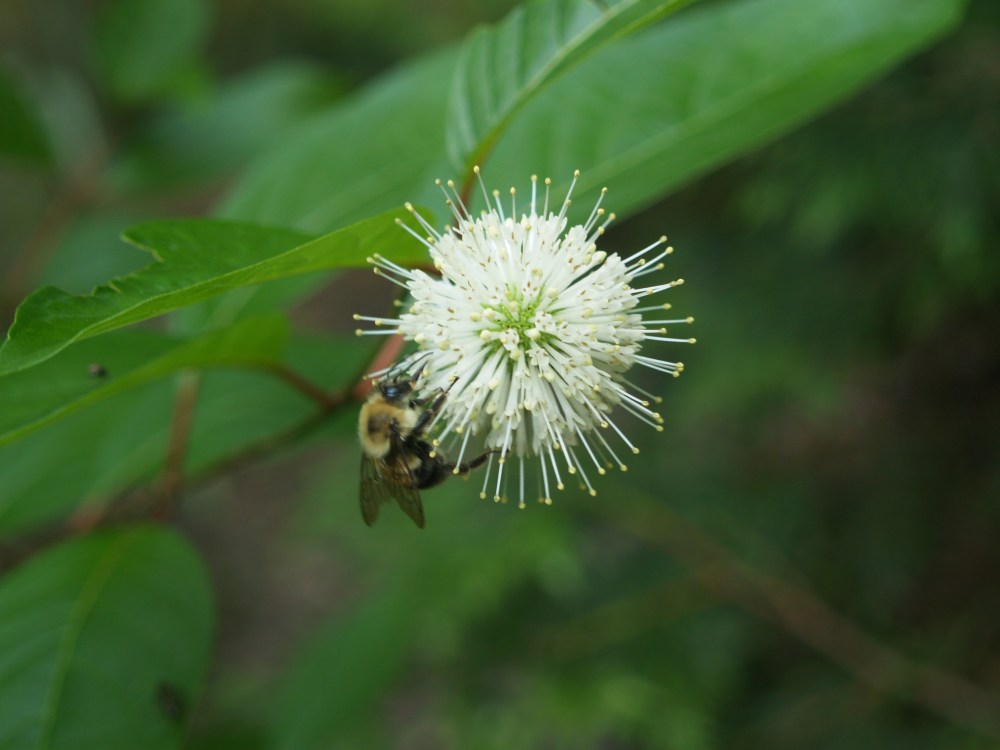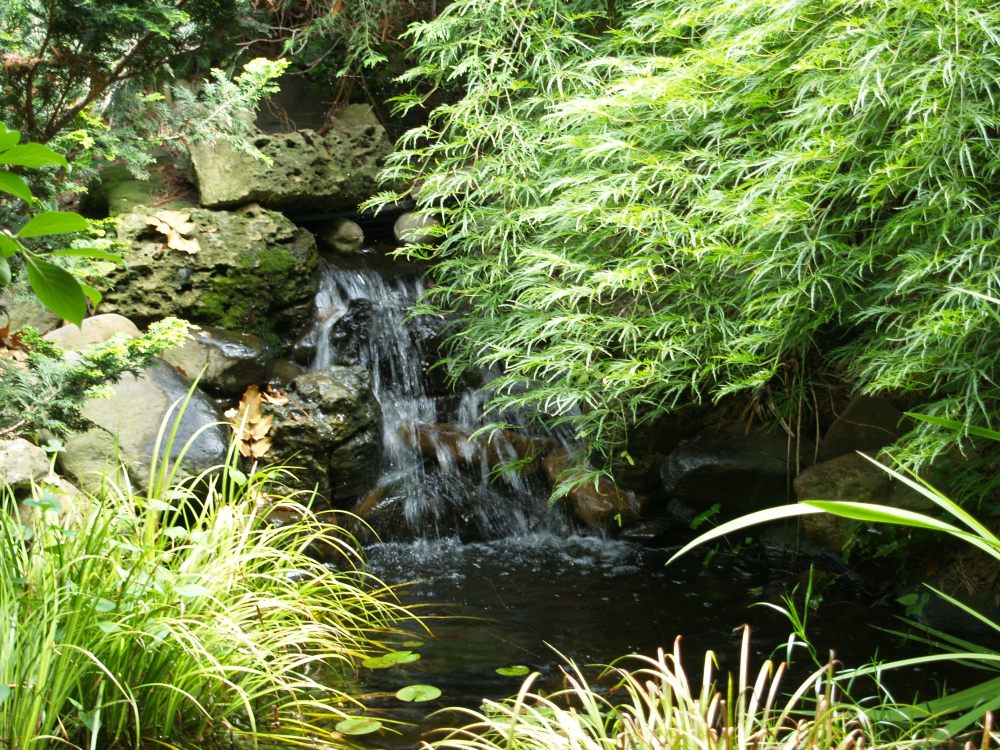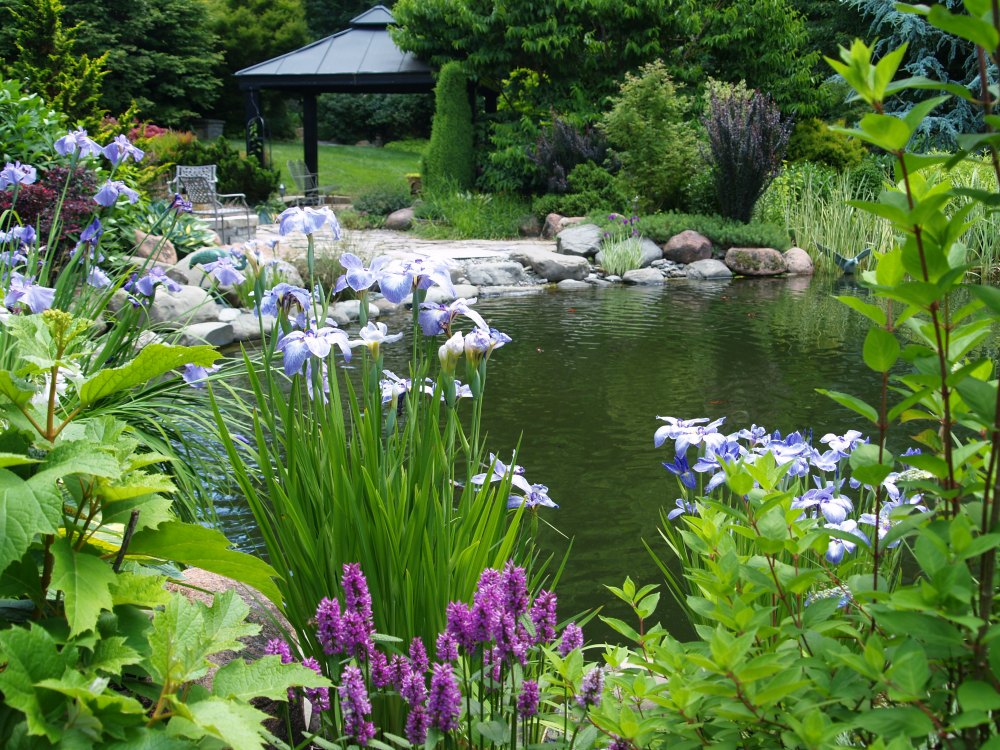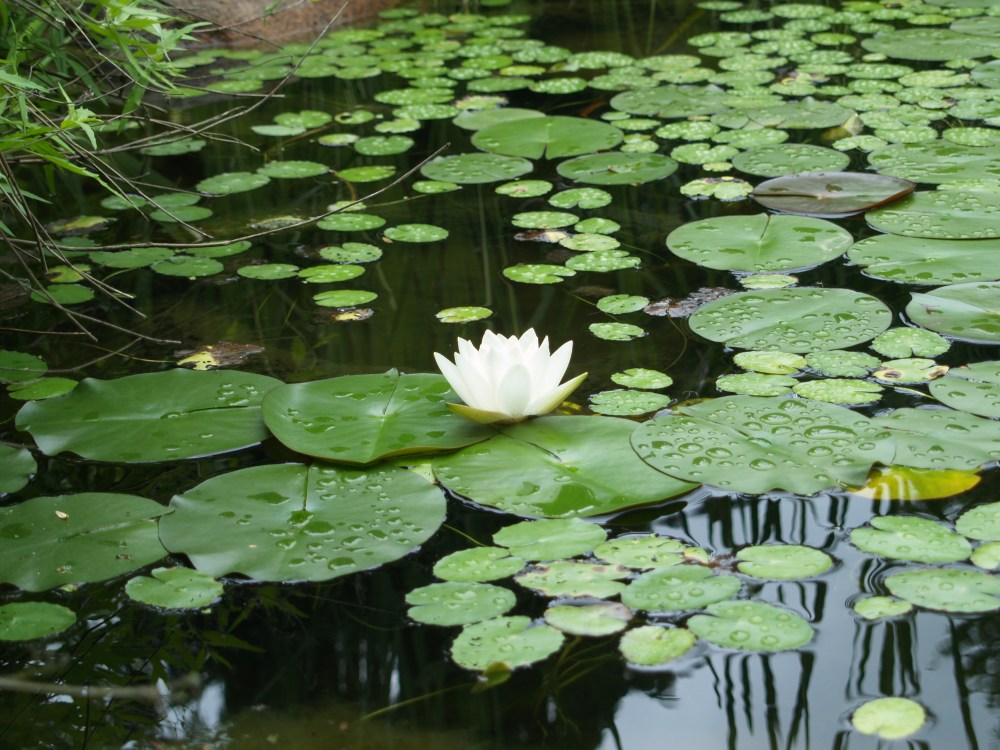Parts of this country have been deluged by rain in recent weeks, so a gardener must be pardoned for even the mildest complaint about too much rain. One storm after another has turned the rear garden into a swamp, which in recent years it has become for too many months of the year, but rarely in June. I suspect that a few local basements have flooded, and I suppose I should be ashamed to whine that a tall holly has finally succumbed to the dampness. Several shrubs and a Japanese maple planted years ago when this area was dry are not happy in the wet soil, though I figure that these will recover once the ground dries. Perhaps in July.

I am enthused that buttonbush and sweetshrubs planted at the margins of the worst of the wetness are thriving, and while I thought when this area was replanted a few years ago that I am too old to ever see it become full again, now I imagine that this is only a few years away. I expect to be around at least that long. With Japanese iris and Sensitive ferns planted in standing water and shrubs to the side, I think that perhaps the area could grow to be more pleasing than when a large ‘Arnold Promise’ witch hazel and the holly filled the space, though the fragrant blooms of the witch hazel are dearly missed in late winter.

With ample rainfall I have not had to top off the garden’s five ponds to compensate for evaporation. The oldest pond blew a plumbing fitting a few days ago to spew water, eroding loose soil from between hellebores and hostas planted beneath the stewartia that borders the pond. But, little damage was done. A few connectors, a short section of pipe, and glue took care of the problem in a few minutes, and a thunderstorm was forecast for the evening so I did not have to refill the one third empty pond.

Unrelated to rain, there are many more baby fish in the koi pond than I’ve ever seen. Of course, they will not be still to count, but I guess that there are a hundred or more. In recent years I’ve estimated there were seventy five medium and large koi in the pond, and though they were growing larger, the numbers did not seem to be rising substantially. Until this spring, and I have no explanation for the exploding population.

The pond is large (maybe 1,300 square feet), but I do not suppose that it can manage this doubling (or more) of the number of fish. I must rethink the pond’s simple filtration, and as many koi as I can catch will be moved to the other four ponds in the garden. I don’t expect this will be an easy process, and I’ve avoided keeping fish in the other ponds in recent years to protect them from herons that frequent the area. My wife hesitates to move the small koi to ponds that are not safe from predators, but I have no choice but to move them and then figure how to discourage the heron.

Before the koi pond was constructed, herons nearly cleaned out one pond, but in the years since trees and shrubs have grown considerably to provide more cover, and possible to make a heron less comfortable that it can easily flee. There are a few other tricks to keep the herons away, which I’ve haven’t had to bother with since the koi pond is much deeper, but again I’ll need to watch out to protect the relatively defenseless fish.
Such beautiful fish, thanks for sharing that picture of them. Hope you are able to protect them from the Heron.
My young sons and i learned a difficult lesson this year: Don’t name the fish!!! Our pond is much smaller than yours, and one early morning a heron devoured all of our koi and a few of our favorite goldfish. We are left with the second and third generation goldfish, which will NOT be named, in hopes to ease the inevitable reality of future loss. Despite the occasional heron, the pond remains our favorite part of the backyard 🙂
Though I did not name my fish, I was quite upset to lose them to the heron. The koi pond was constructed so that it is too deep, and the sides of the pond are straight up and down so the heron can’t stand in it. Still, the heron occasionally stands in the shallow filtration area, but the only time the koi venture here is when food floats there, and I’m standing nearby. Recently, I’ve seen one of the neighborhood hawks diving from a tall perch in one of the garden’s trees. I haven’t seen the hawk fly off with any fish, and there are too many to count to have any idea if any are missing.